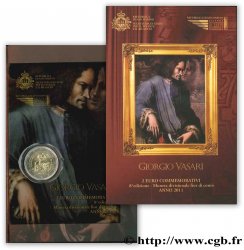Sie müssen angeschlossen sein und von cgb.fr genehmigt werden, um in einer E-Auktion teilzunehmen.Melden Sie sich an, um zu wetten..Die Kontobestätigungen sind innerhalb von 48 Stunden nach Ihrer Anmeldung gemacht.Warten Sie nicht bis die letzten zwei Tage vor dem Abschluss eines Verkaufs, um Ihre Registrierung abzuschließen. Klickend "BIETEN" verpflichten Sie sich vertraglich, diesen Artikel zu kaufen und Sie nehmen ohne Reserve die allgemeinen Verkaufsbedingungen für den e-auctions zu cgb.fr an.
Der Verkauf wird an der Zeit auf der Übersichtsseite angezeigt geschlossen werden. Angebote, die nach der Schließung Zeit empfangen sind, werden nicht gültig.
Bitte beachten Sie, dass die Fristen für die Einreichung Ihres Angebots auf unsere Server können variieren und es kann zur Ablehnung Ihres Angebots entstehen, wenn es in den letzten Sekunden des Verkaufs gesendet wird. Die Angebote sollen mit ganzer Zahl ausgeführt sein, Sie können Kommas oder des Punktes in Ihrem Angebot nicht erfassen. Bei Fragen klicken Sie hier, um einen Blick auf die FAQ E-Auktionen.
KEINE ANSCHAFFUNGSKOSTEN FÜR DIE KÄUFER.
KEINE ANSCHAFFUNGSKOSTEN FÜR DIE KÄUFER.
| Schätzung : | 160 € |
| Preis : | 30 € |
| Höchstgebot : | 36 € |
| Verkaufsende : | 03 April 2023 19:31:20 |
| Bieter : | 6 Bieter |
Type : Médaille animalière - Kangourou
Datum: 1973
Name der Münzstätte / Stadt : Monnaie de Paris
Metall : Bronze
Durchmesser : 71,5 mm
Stempelstellung : 12 h.
Graveur TURLAN Bernard (1932-)
Gewicht : 191,3 g.
Rand lisse + corne BRONZE + 1973
Punze : corne BRONZE
Kommentare zum Erhaltungszustand:
Patine hétérogène avec des traces d’un léger nettoyage dans les champs
Vorderseite
Titulatur der Vorderseite ANÉPIGRAPHE.
Beschreibung Vorderseite Deux kangourous bondissant à droite.
Rückseite
Titulatur der Rückseite ANÉPIGRAPHE.
Beschreibung Rückseite Kangourou assis, regardant en arrière.
Kommentare
Bernard Turlan, né en 1932, est un médailleur français. Il étudie à l'École des beaux-arts de Paris, puis œuvre pour la Monnaie de Paris.
Le kangourou est un marsupial de la famille des macropodidés typique du continent australien.
Au sens strict, le nom kangourou désigne l'un des membres des quatre plus grandes espèces vivantes : le kangourou roux, le kangourou géant, le kangourou gris et le kangourou antilope.
Au sens large, on y rassemble les 63 plus grandes espèces vivantes de la famille des macropodidés. En plus des espèces précédentes, on y ajoute les wallaroos, les wallabys, les kangourous arboricoles, les pademelons et le quokka..
Bernard Turlan, born in 1932, is a French medalist. He studied at the École des Beaux-Arts in Paris and then worked for the Paris Mint. The kangaroo is a marsupial of the macropodidae family, typical of the Australian continent. Strictly speaking, the name kangaroo refers to one of the four largest living species: the red kangaroo, the southern grey kangaroo, the eastern grey kangaroo, and the antelope kangaroo. Broadly speaking, it includes the 63 largest living species of the macropodidae family. In addition to the above species, there are also wallaroos, wallabies, tree kangaroos, pademelons, and the quokka.
Le kangourou est un marsupial de la famille des macropodidés typique du continent australien.
Au sens strict, le nom kangourou désigne l'un des membres des quatre plus grandes espèces vivantes : le kangourou roux, le kangourou géant, le kangourou gris et le kangourou antilope.
Au sens large, on y rassemble les 63 plus grandes espèces vivantes de la famille des macropodidés. En plus des espèces précédentes, on y ajoute les wallaroos, les wallabys, les kangourous arboricoles, les pademelons et le quokka..
Bernard Turlan, born in 1932, is a French medalist. He studied at the École des Beaux-Arts in Paris and then worked for the Paris Mint. The kangaroo is a marsupial of the macropodidae family, typical of the Australian continent. Strictly speaking, the name kangaroo refers to one of the four largest living species: the red kangaroo, the southern grey kangaroo, the eastern grey kangaroo, and the antelope kangaroo. Broadly speaking, it includes the 63 largest living species of the macropodidae family. In addition to the above species, there are also wallaroos, wallabies, tree kangaroos, pademelons, and the quokka.








 Berichten über einen Fehler
Berichten über einen Fehler Die Seite drucken
Die Seite drucken Teilen meiner Auswahl
Teilen meiner Auswahl Stellen Sie eine Frage
Stellen Sie eine Frage Einlieferung/Verkauf
Einlieferung/Verkauf
 Details
Details















